You brake, you lose! But if you brake later, you’ll ride faster for longer. Either way, a mountain bike without good brakes is a death trap. The fact is: with bikes becoming increasingly capable, we’re encouraged to push our boundaries and look for tougher trails. As a result, we inevitably get faster, and the brakes have to keep up with that! We pitted 14 of the hottest (no pun intended) brakes against each other to find out which one does the job best.
Table of contents – What to expect in the test
- Our candidates – The 14 MTB brake models we tested
- How do the MTB brakes in this test work?
- The brake fluid of the MTB brakes we tested
- The brake pads of our MTB brakes
- The rotors of our MTB brakes
- How we tested the brakes
- The MTB brake test in the lab
- Testing the brakes with the BrakeAce telemetry system
- Testing the brakes on the trail
- Our conclusions about the MTB brake test field
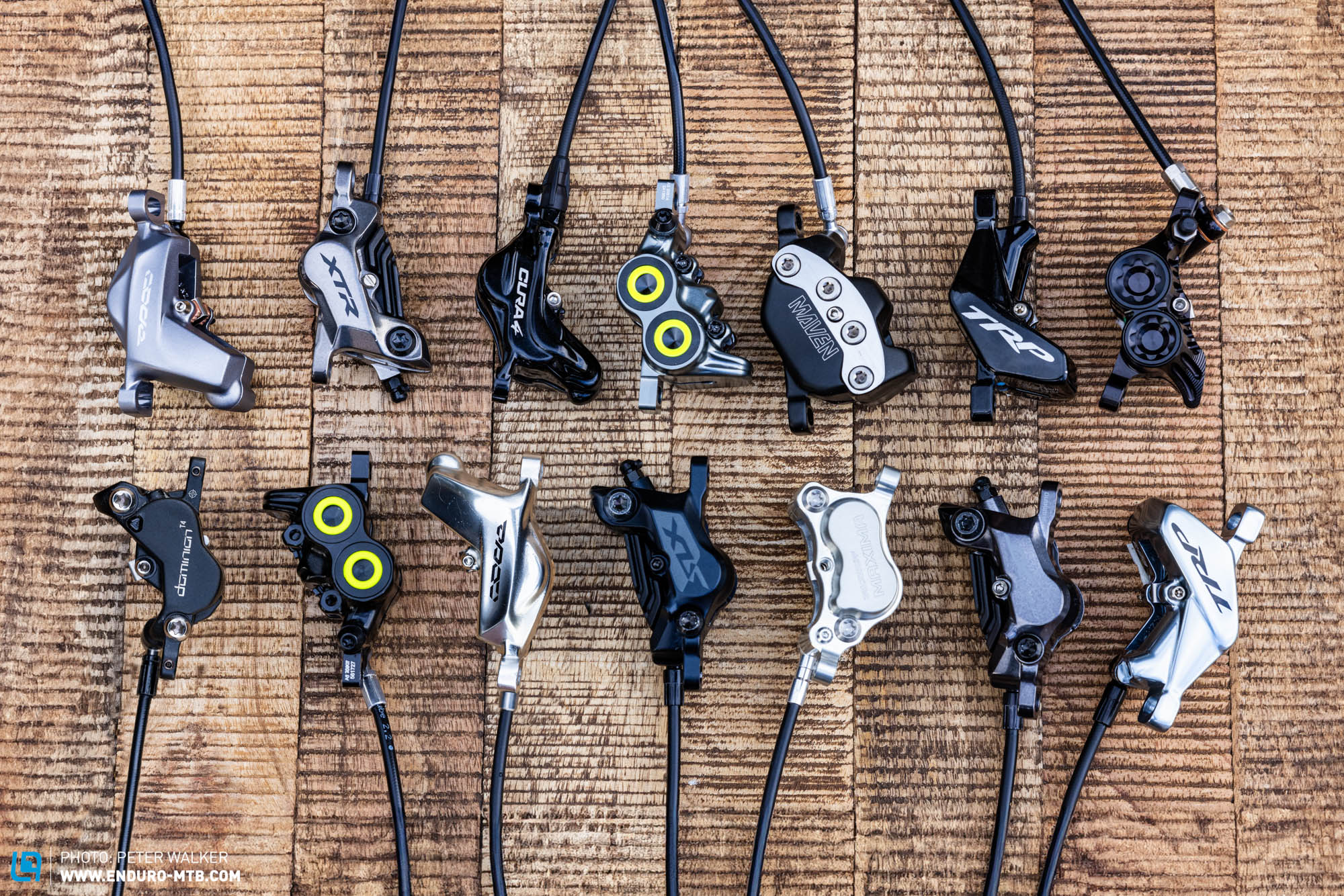
If you want to be fast, you’ll have to be able to slow down quickly. When talking shop with your riding buddies, it’s all about speed and personal bests. But to beat everyone else, you need a set of brakes that allow you to brake hard. In a nutshell, powerful brakes help maximise deceleration, which in return makes it easier to control the bike on tough, demanding terrain. That said, powerful brakes that require little finger strength aren’t just a blessing for racers or KOM hunters. Beginners will particularly benefit from a decent set of stoppers, because they tend to hang more on their brakes – which can be detrimental to both their forearms and their bikes. If you have to squeeze hard to decelerate, you’ll quickly end up with arm pump. Needless to say, this comes at the expense of your safety and forces you to slow down or even stop while your mates shred their way back into the valley – not a good look!
The solution is easy! Just get a set of brakes that are both powerful and easy to modulate. Sounds too good to be true? Don’t worry, they exist! But what sets the best MTB disc brakes apart from the competition? They should be reliable, easy to service, light and ideally not too expensive. Raw power is nothing without good modulation. To find out which brake performs best, we spent several months glowing up rotors, burning pads, handling syringes and testing the brakes at the Sinter laboratory to back up our personal experiences with some scientific evidence.
Our candidates – The 14 MTB brake models we tested
Our test field includes both budget brakes and fancy boutique stoppers, from some of the most popular and affordable OEM models, to the finest bling money can buy. But what do all our competitors have in common? They’re all hydraulic and have four pistons, with retail prices ranging between a very humble € 240, right the way to an eye-watering € 1,300, with the majority of our competitors costing between € 400 and € 700. These are RRP prices for a brake set without rotors. However, some of the brakes in this test are also available as a complete set, with some shops undercutting retail prices rather significantly in some cases. Shimano brakes, for example, which have been around for a long time, are available online for nearly half the RRP.

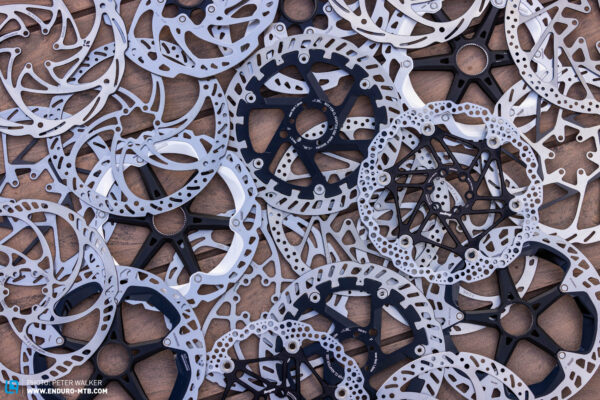
As far as weight goes, the differences between our competitors are only marginal, with a 180 g gap between the lightest and heaviest brakes on test, with the Hayes Dominion T4 tipping the scales at 530 g, and the SRAM MAVEN Ultimate weighing in at 710 g. The brake fluid, which is used to transfer the power from the master cylinder to the calliper, is either mineral oil or DOT. The latter was adopted from the automotive industry, but more on that later. And there also just two types of brake pads featured in these brakes – metallic (sintered) and organic.
| Brand | Model | Brake Liquid | Brake Pad | Weight Set | Price Set |
|---|---|---|---|---|---|
| Formula | Cura 4 | Mineral Oil | organic | 544 g | 422 € |
| Hayes | Dominion T4 | DOT | organic | 530 g | 720 € |
| Hope | Tech 4 V4 | DOT | organic | 592 g | 580 € |
| MAGURA | MT5 Pro | Mineral Oil | organic | 538 g | 300 € |
| MAGURA | MT7 | Mineral Oil | organic | 542 g | 440 € |
| Shimano | SLX | Mineral Oil | organic | 600 g | 350 € |
| Shimano | XT | Mineral Oil | organic | 588 g | 420 € |
| Shimano | XTR | Mineral Oil | organic | 552 g | 630 € |
| SRAM | CODE Bronze Stealth | DOT | metallic | 628 g | 440 € |
| SRAM | CODE Ultimate Stealth | DOT | metallic | 594 g | 640 € |
| SRAM | MAVEN Ultimate | Mineral Oil | organic | 710 g | 720 € |
| Trickstuff | MAXIMA | Mineral Oil | organic | 548 g | 1300 € |
| TRP | DH-R EVO | Mineral Oil | organic | 638 g | 500 € |
| TRP | Trail EVO | Mineral Oil | organic | 638 g | 400 € |
How do the MTB brakes in this test work?
This comparison test only includes hydraulic disc brakes, which have long been the standard for modern MTBs. All brakes have a lever/master cylinder unit on the handlebars, often simply referred to as the lever. Then there’s the slave unit, which is the part that is attached to the frame or fork and usually referred to as the calliper.
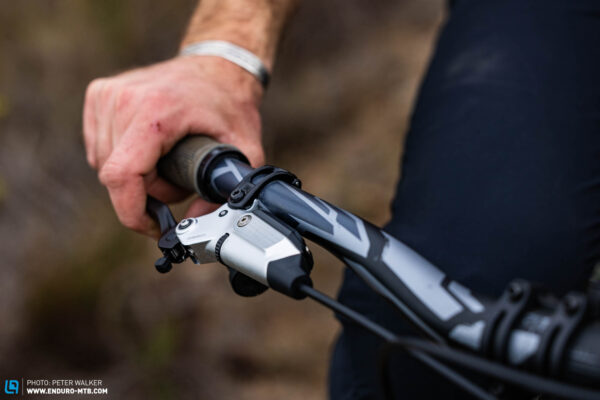
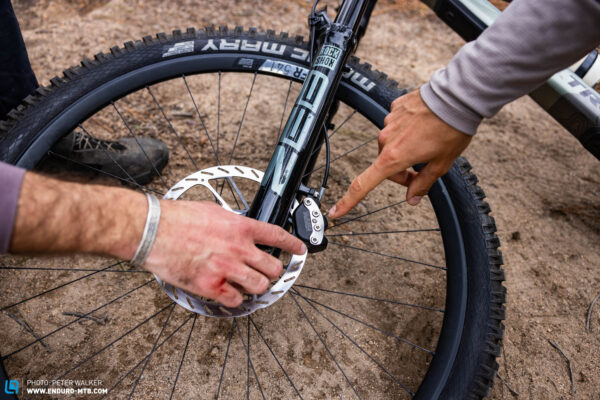
The two parts are connected with a brake line, which transfers the pressure from the master cylinder to the slave pistons. The pressure builds up in the master cylinder itself, where a pushrod exerts force on the piston whenever you pull the lever. Since brake fluid is a liquid and as such can’t be compressed, pressure builds up in the system, moving towards the brake calliper, where the big brake pistons are housed. The ratio of master to slave piston area is crucial when it comes to converting the force exerted on the master piston into a larger force on the slave cylinder. The physical basis for this is Pascal’s law and his formula: pressure = force/area. Put simply, the smaller the diameter of the master piston, the higher the pressure in the system, and the shorter the lever throw, because there’s less fluid to displace.
This is comparable with a shock pump, which can handle extremely high pressures, but is pretty much useless to inflate a tire. In order to achieve a high transmission ratio without using massive brakes, we rely on multiple slave pistons, with the current state of the art being 4.
The brake fluid of the MTB brakes we tested
As the name suggests, hydraulic brakes rely on a fluid to transmit the power. There are currently two types of brake fluid: mineral oil and DOT. The advantage of a fluid: unlike air, it can’t be compressed, meaning that the power transmission is virtually loss-free. This is why meticulous bleeding – i.e. removing air bubbles from the system – is crucial to a brake’s performance. Another important factor is that brake fluid has a much higher boiling point than water. As a result, if water gets mixed with the fluid, the intense heat generated under braking can cause it to boil. This causes air bubbles to form in the system, which can be compressed, resulting in a vague bite point.

DOT brake fluid is widely used in the automotive industry. Fun fact: the name is an acronym of US Department of Transportation. DOT fluid is divided into numbers, with DOT 4 and 5.1 being the most common for MTBs. The higher the number, the higher the boiling temperature. The most important feature of DOT brake fluid is that it’s hygroscopic, which is just a fancy way to say that it absorbs water and moisture (from the air, among other things), forming a homogeneous fluid. This changes the properties of DOT, and the boiling point begins to drop from around 260° as more moisture is absorbed. As a result, brake fluid should be changed on a regular basis. DOT is also harmful to our health and corrosive on the skin, clothing and the bike’s paint finish. However, it’s not the quantity that makes it harmful, but rather the time it stays in contact with an organic body. In other words, if you rinse it off immediately after contact, you should be fine! However, if you leave DOT on your bike frame, it will stain and discolour the paint job over time.
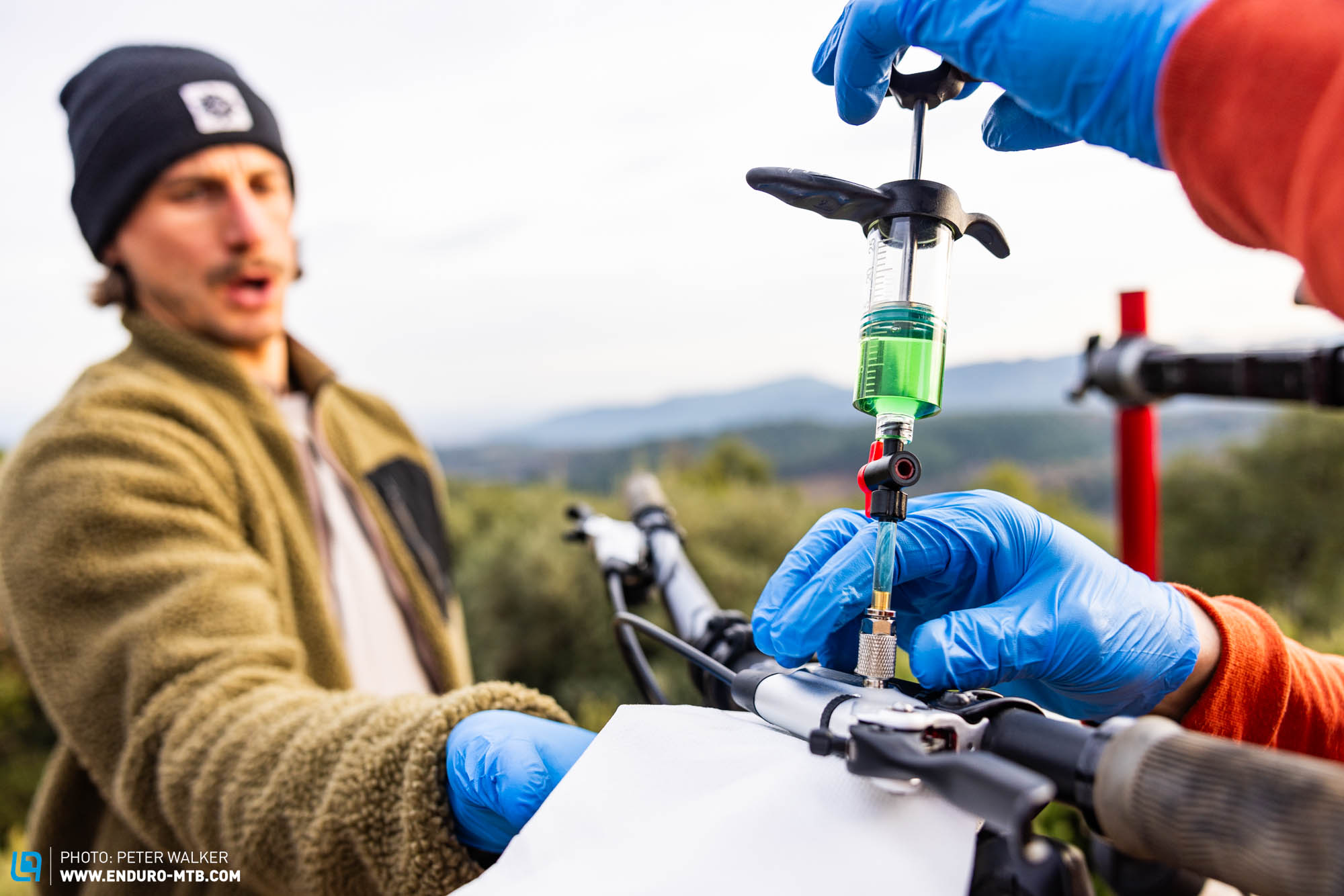

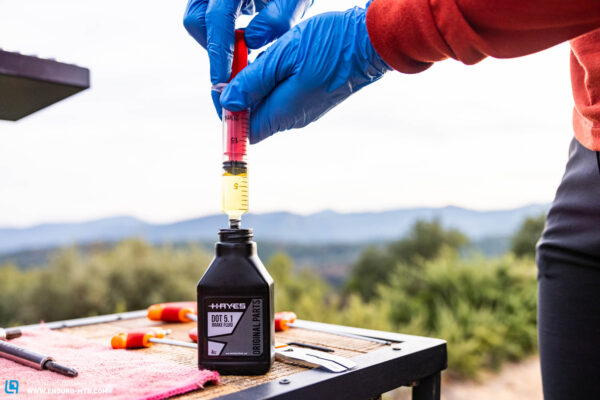
Mineral oil is often used as an alternative to DOT for braking systems. Mineral oil is obtained from crude oil, and has generally a lower boiling point of around 190° C. While it’s not as immediately harmful to either our health or the bike’s paint finish, it can contaminate the brake pads. Mineral oil doesn’t attract water, but doesn’t absorb it either, meaning that the oil simply floats to the top, basically creating an emulsion – just like a salad dressing.
The type of brake fluid used on the brakes is down to the manufacturer, meaning that you can’t simply switch between different fluids, as this can damage the seals and brake lines. The influence on brake feel is marginal. You should also use the exact mineral oil recommended by the manufacturer as they contain different additives, and if you use DOT, make sure you get the right number.
The brake pads of our MTB brakes
In principle, all brake manufacturers also offer their own pads – and most of them in all sorts of flavours. Retrofit pads from third-party manufacturers like Sinter, GALFER and Kool-Stop are a good alternative, since they’re likely to improve braking performance, thus providing a relatively cost-effective upgrade. Just be aware that using aftermarket brake pads might void your brake manufacturer’s warranty.
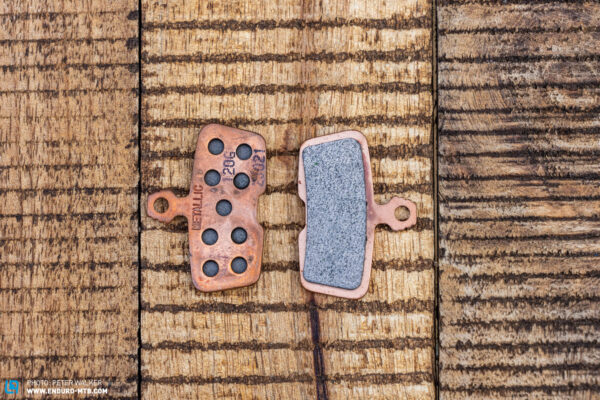
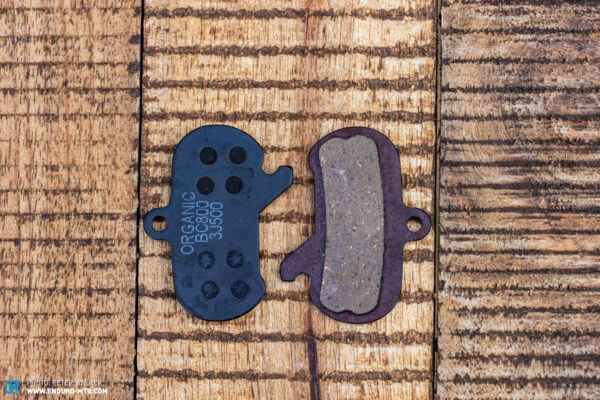
In a nutshell, there are two types of pads available for most brakes: metallic and organic. Both are manufactured using the sintering process with a friction material, lubricant and fibres. The friction material is responsible for the… err, friction, and generates the braking power you feel. The friction material is a mix of hard materials such as metal oxides and carbides, and is responsible for most of the wear on the rotors. The lubricant, in turn, attempts to limit wear while ensuring a stable friction coefficient. The fibres can be either organic (Kevlar or carbon) or metallic (copper and steel), while a binding and filling resin is used to bind the compound. All pads are produced in the same way: the compound is heated up and pressed onto a carrier plate at high pressure. The manufacturing process of metallic pads requires higher temperatures.
The rotors of our MTB brakes
All MTB brake rotors are made of steel – at least on the friction surface. The thickness of rotors can vary depending on the models and manufacturers, and is primarily linked to heat dissipation. More material enables better heat dissipation, preventing the sensitive calliper from overheating – at least in theory. In our lab test, however, we weren’t able to confirm this theory. Shimano, on the other hand, use a sandwich design with an aluminium core on their XTR ICE-TECH rotors, which is intended to improve heat dissipation, while at the same time reducing weight. Our lab results confirmed that sandwich structure makes perfect sense, with the Shimano XTR brakes reading the lowest temperatures – an effect that is particularly noticeable with sintered pads.

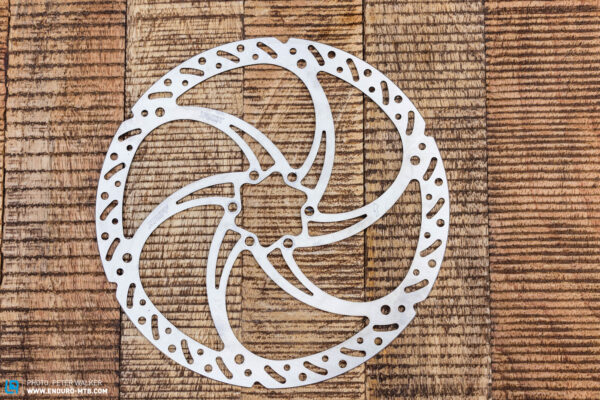
There’s another major distinction to be made between brake rotors, with one-piece and two-piece designs to choose from. With the latter, the outer friction ring is riveted to an internal carrier (or spider), which enables a floating design, preventing the friction ring from expanding or distorting unevenly when exposed to heat.
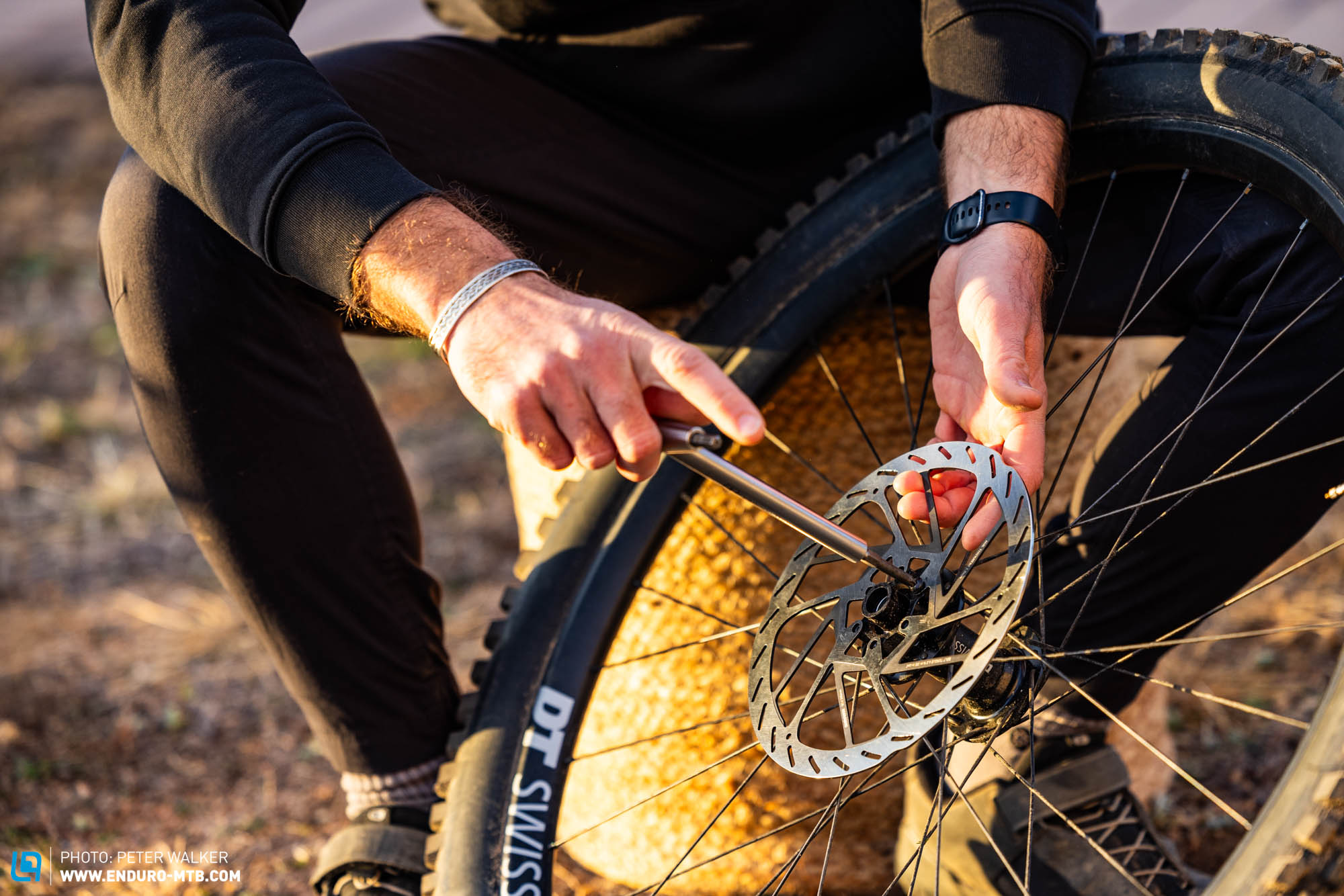
When it comes to mounting standards, the market is divided between Shimano and the rest of the brake world: it’s 6-bolt vs. Center Lock. We’re very fond of the 6 bolt variant, which might take longer to install but allows for zero play on the hub. Plus, you can mount 6-bolt discs on a Centerlock hub using an adapter, while that’s not possible the other way around.
How we tested the brakes
For our big 2024 brake test, we put our candidates through the wringer using the original pads and 200 mm rotors front and rear. The test results are made up of three different criteria: the lab test results, BrakeAce telemetry data, and most importantly, our practical tests on the trail. For the practical part, we took a trip to sunny Catalunya to test the brakes back-to-back on a predefined test track. Here we piled up endless descents, bringing the brakes up to temperature to find out how they perform and compare to each other. We also tested the brakes on our familiar home trails and, needless to say, drew on countless years of experience in the mountain biking sector, which gave us the opportunity to “experience” hundreds of different brake models and generations.
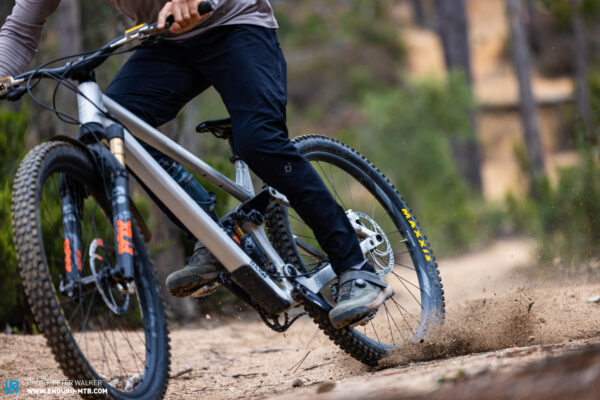
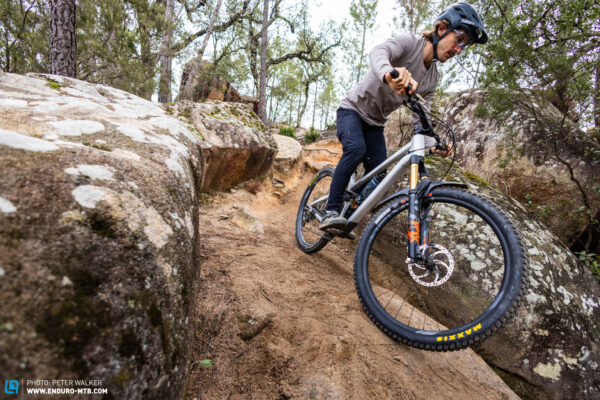
The MTB brake test in the lab
We carried out extensive test sessions at the Sinter lab in Slovenia. Here, Sinter not only manufacture their own brake pads, but also have a big test-lab, which they were kind enough to share with us for several days. Following their recommended break-in procedure, we put the brakes through their paces on the test bench using the original pads.
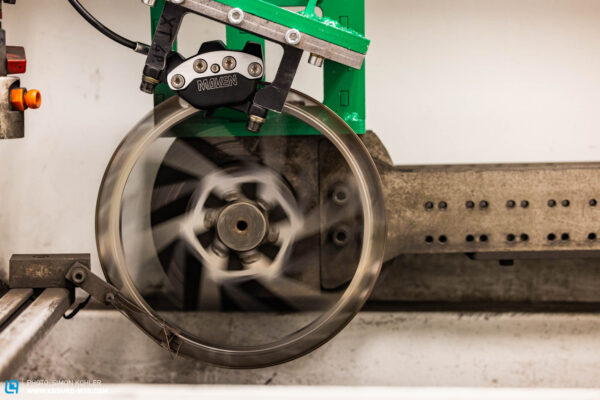
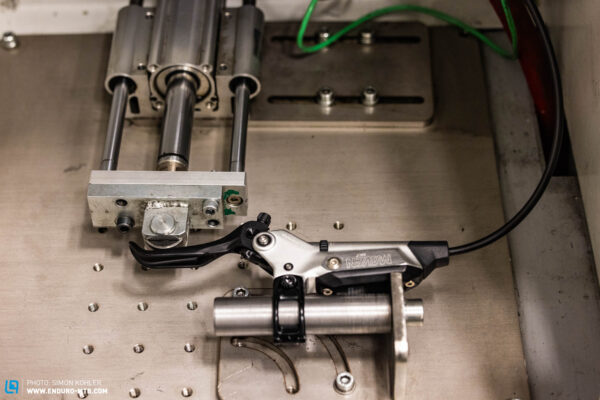
This procedure was followed by 20 sequences of two test procedures each: the first test simulated deceleration from 30 km/h to a standstill, while the second test simulated decelerating from 30 to 15 km/h. This is a classic scenario that occurs when braking before a corner. The brakes were given 10 seconds to recover between each of the 20 sequences. In addition, we ventilated the brakes constantly to simulate natural airflow. The results are the average of the 20 tests performed.
To generate the braking force, we always applied 40 N to the brake lever, which corresponds to a tractive force of 4 kg. After testing the brakes with the original pads, we carried out a second round of tests with Sinter’s in-house “Race” pads to find out how much tuning potential is in each brake. The Sinter pads – which are organic, by the way – improved deceleration on all models, but to very different degrees.
The lab test results of all the 14 MTB brakes
| Brake | Brakepads | Max. Disc Temperature |
Ø Pressure |
Ø Brake Torque 30 km/h – 15 km/h |
Ø Decel Time 30 km/h – 15 km/h |
Ø Brake Torque 30 km/h – 0 km/h |
Ø Decel Time 30 km/h – 0 km/h |
|---|---|---|---|---|---|---|---|
| Hope Tech 4 V4 | Racing Green Sinter Green |
167.2 °C 156.8 °C |
53.9 bar 53.6 bar |
242.4 Nm 253.7 Nm |
1.005 s 0.97 s |
265.8 Nm 266.5 Nm |
1.63 s 1.62 s |
| Trickstuff MAXIMA | Power + Sinter Green |
208.1 °C 199.8 °C |
56.4 bar 56.5 bar |
248.2 Nm 269.7 Nm |
1.05 s 0.97 s |
257.9 Nm 277.0 Nm |
1.735 s 1.53 s |
| SRAM MAVEN Ultimate | Organic Black | 218.4 °C | 48.2 bar | 219.1 Nm | 1.195 s | 233.5 Nm | 2.105 s |
| Shimano XTR | N03A-RF Sinter Green |
182.8 °C 125.5 °C |
54.2 bar 57.5 bar |
216.0 Nm 251.4 Nm |
1.225 s 0.98 s |
220.0 Nm | 2.32 s |
| Hayes Dominion T4 | Semi-Metallic Sinter Green |
212.3 °C 196,5 °C |
52.1 bar 53.9 bar |
210.6 Nm 239.0 Nm |
1.325 s 1.11 s |
214.1 Nm 248.3 Nm |
2.435 s 1.85 s |
| Formula Cura 4 | organic Sinter Green |
253,6 °C 231.4 °C |
41,2 bar 44.0 bar |
197,6 Nm 241.7 Nm |
1,485 s 1.08 s |
208,0 Nm 237.9 Nm |
2,585 s 2.02 s |
| Shimano XT | N03A-RF | 215.6 °C | 55.3 bar | 205.7 Nm | 1.35 s | 206.7 Nm | 2.65 s |
| MAGURA MT7 | 8.P Sinter Green |
204.0 °C 227.6 °C |
42.4 bar 42.4 bar |
195.5 Nm 213.2 Nm |
1.495 s 1.27 s |
205.2 Nm 216.0 Nm |
2.615 s 2.42 s |
| TRP DH-R EVO | P-Q12RS Resin Sinter Green |
224.4 °C 238.6 °C |
46.1 bar 49.9 bar |
199.8 Nm 221.4 Nm |
1.505 s 1.26 s |
203.5 Nm 209.9 Nm |
2.72 s 2.52 s |
| Shimano SLX | N03A-RF | 241.4 °C | 52.2 bar | 199.9 Nm | 1.445 s | 198.6 Nm | 2.855 s |
| MAGURA MT5 Pro | 9.P | 234.6 °C | 39.0 bar | 178.1 Nm | 1.835 s | 187.1 Nm | 3.275 s |
| SRAM CODE Bronze Stealth | Sintered Copper | 247.4 °C | 58.1 bar | 182.3 Nm | 1.915 s | 186.5 Nm | 3.225 s |
| SRAM CODE Ultimate Stealth | Sintered Copper Sinter Green |
286.6 °C 256.4 °C |
56.7 bar 53.0 bar |
183.8 Nm 207.1 Nm |
1.875 s 1.38 s |
179.6 Nm 206.1 Nm |
3.555 s 2.60 s |
| TRP Trail EVO | P-Q12RS Resin | 276.1 °C | 42.1 bar | 176.4 Nm | 1.95 s | 164.8 Nm | 4.51 s |
*sorted by Ø Brake Torque 30 km/h – 0 km/h.
Testing the brakes with the BrakeAce telemetry system
In order to get a clearer picture of the performance of each brake and, above all, to see them visually on a screen, we installed the BrakeAce telemetry system on one bike at a time. Essentially, this replaces the calliper adapters (front and rear) and is paired with a smartphone. After launching the BrakeAce app on your mobile phone, the system records the data and transmits it wirelessly to your phone after each lap. When you’re done, you can evaluate and compare the data from different runs with all of the braking episodes on your laptop.


Among other things, the system measures the number and duration of braking events. The rule of thumb: the shorter the event, the better, as this allows you to reduce speed more efficiently. The system also shows you the average braking power and power distribution between the front and rear brakes. Of course, deceleration is stronger at the front, while you tend to let the brakes drag for longer at the rear. The app uses all the data to calculate a flow score, which rates the run as a whole. Thanks to the GPS data provided by your mobile phone, you can also display the braking events on a map, and see how hard you decelerated in each case. This is super exciting to see, as the data tells you more about your braking habits.
For example, it was incredibly interesting to compare the braking behaviour of different models from the same manufacturer. While the number of braking events is almost identical, the length of the respective event is significantly shorter with the more powerful brakes.
Testing the brakes on the trail
Our trail test begins in the most unromantic way possible, as we have to fit the brakes to the bikes and bleed them before setting off. This is where the first differences become clear, especially in regards to practicality and user friendliness. With some brakes, bleeding is done with a funnel, while other models require a slightly more complex system with two-syringes. After mounting the brakes to the handlebars and coming to terms with all the different clamping systems, we followed the manufacturer’s break-in instructions before putting the brakes through the wringer on our predefined test trail. Our test track is scattered with rock slabs and sandy corners, requiring particularly precise control. This allowed us to test not only the raw power and stability of the brakes, but also their modulation, lever feel and ergonomics.
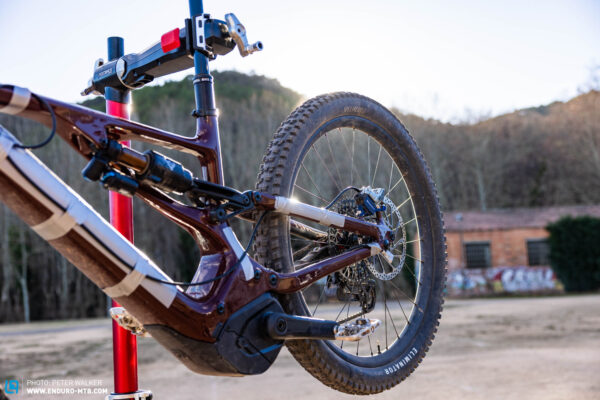
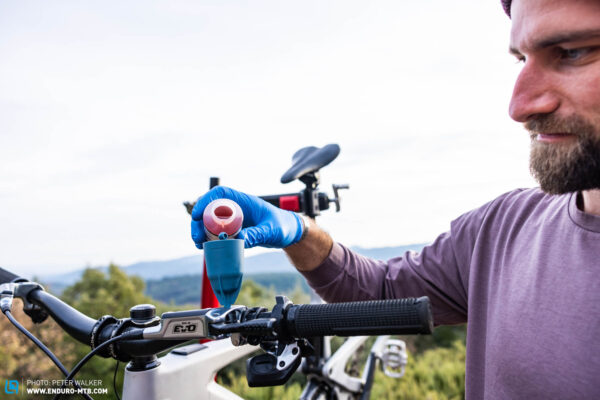
Our conclusions about the MTB brake test field
While all of the brakes look very similar on paper, the price differences are huge. However, the price tag isn’t always reflected in the brake’s performance. Overall, our test highlighted huge differences between the different brake models, whether it was in the lab, on the trail or through the telemetry data. Moreover, it proved once more that brake performance is largely down to personal preferences and feel. Some like a crisp, direct feel, while others prefer fine modulation and progression – it was a hard-fought battle for the title of “Best MTB disc brake of 2024”.
The best MTB disc brake: Hayes Dominion T4

From insider tip to test winner! The Hayes Dominion T4 delivers a tremendous performance, both on the trail with its excellent brake feel and in the lab – it’s a comeback! It impresses above all with its powerful bite and pleasant lever feel, which is rounded off with the lowest weight in the entire test field, and practical features like the Crosshair calliper mount. As a result, the Hayes Dominion T4 secures Best in Test in our big 2024 MTB disc brake comparison test.
Our Best Buy Tip: Shimano SLX
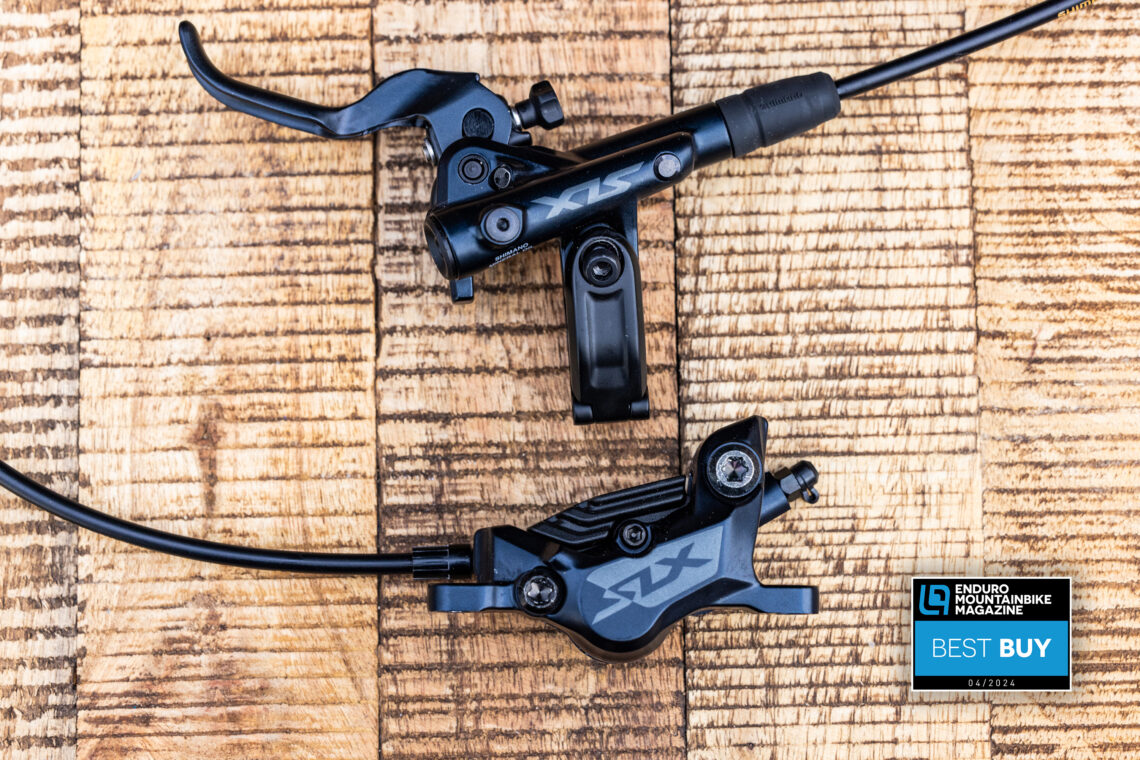
The Shimano SLX strikes the best price-performance ratio in the entire test field, combining powerful deceleration and excellent modulation. While Shimano’s typical on/off brake feel might take a little getting used to, the SLX doesn’t call for compromises in terms of feel, ergonomics or user-friendliness. Even bleeding is a piece of cake, so the SLX is also an excellent option if you’re not too keen on servicing your bike – a well deserved Best Buy Tip!
All brakes in test:
Formula Cura 4 | Hayes Dominion T4 | Hope Tech 4 V4 | MAGURA MT5 Pro | MAGURA MT7 | Shimano SLX | Shimano XT | Shimano XTR | SRAM CODE Bronze Stealth | SRAM CODE Ultimate Stealth | SRAM MAVEN Ultimate | Trickstuff MAXIMA | TRP DH-R EVO | TRP Trail EVO |
Did you enjoy this article? If so, we would be stoked if you decide to support us with a monthly contribution. By becoming a supporter of ENDURO, you will help secure a sustainable future for high-quality mountain bike journalism. Click here to learn more.
Words: Julian Schwede, Peter Walker Photos: Peter Walker, Simon Kohler




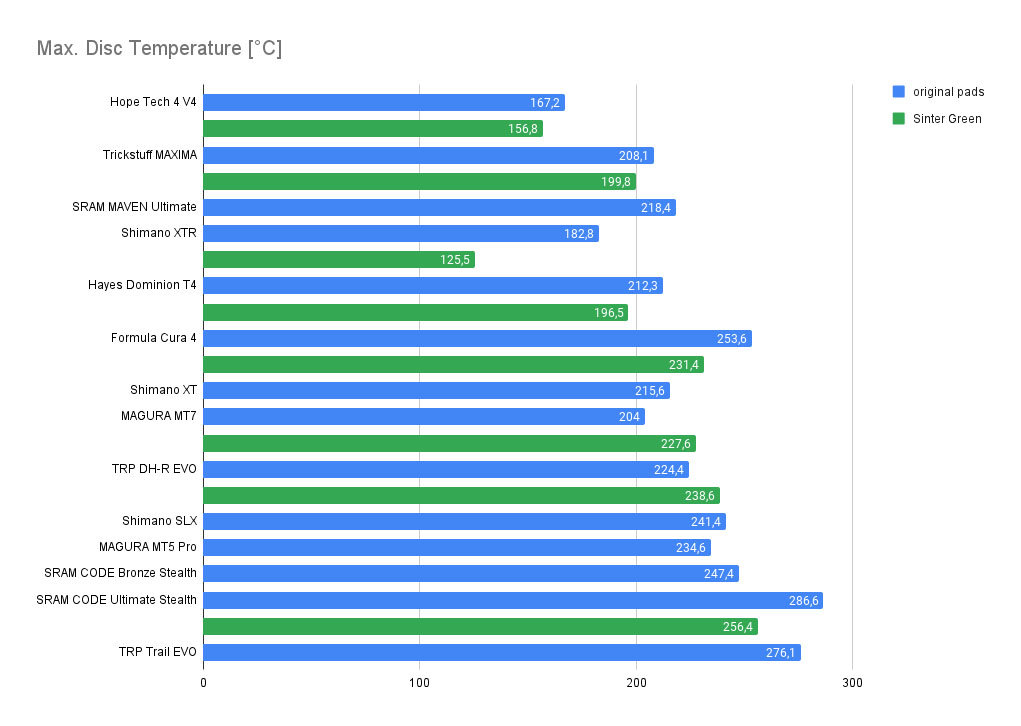

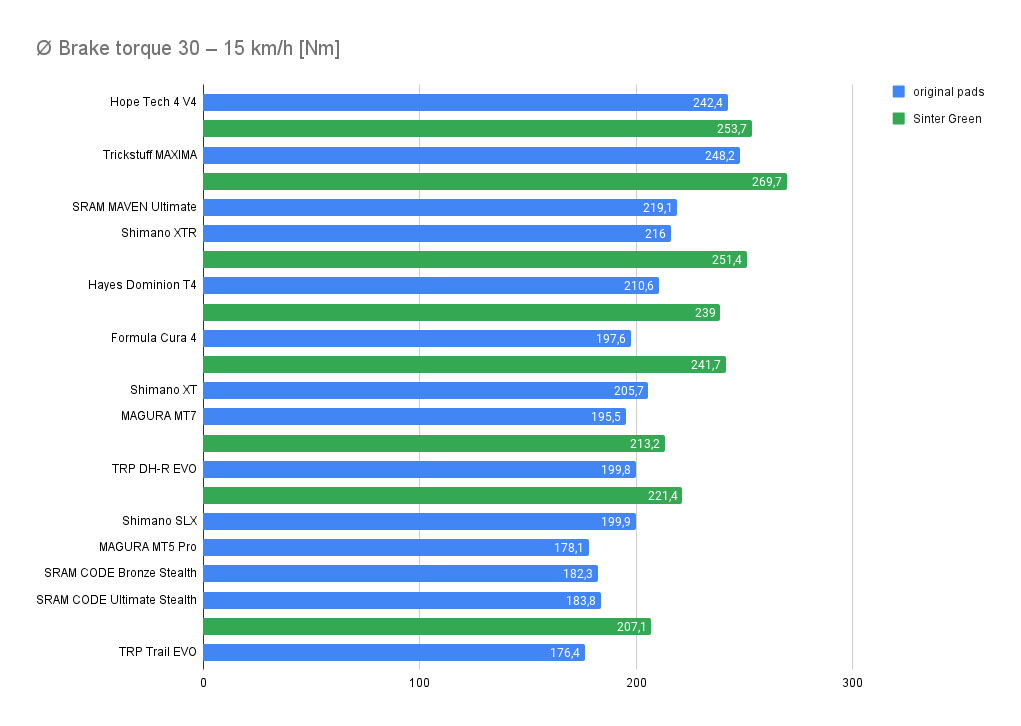
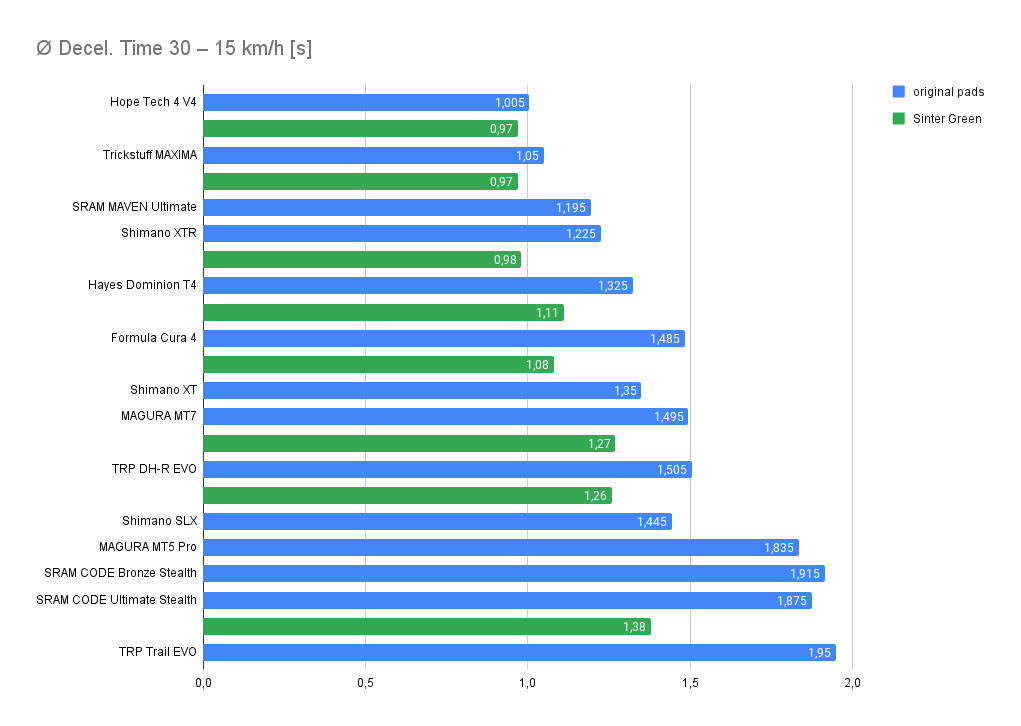
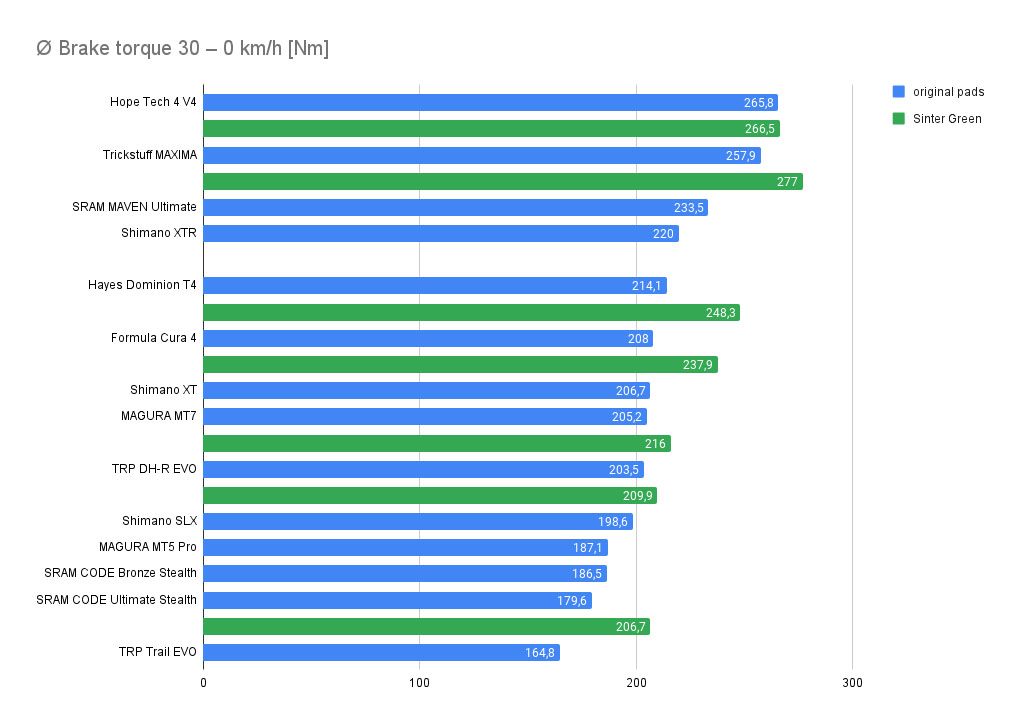
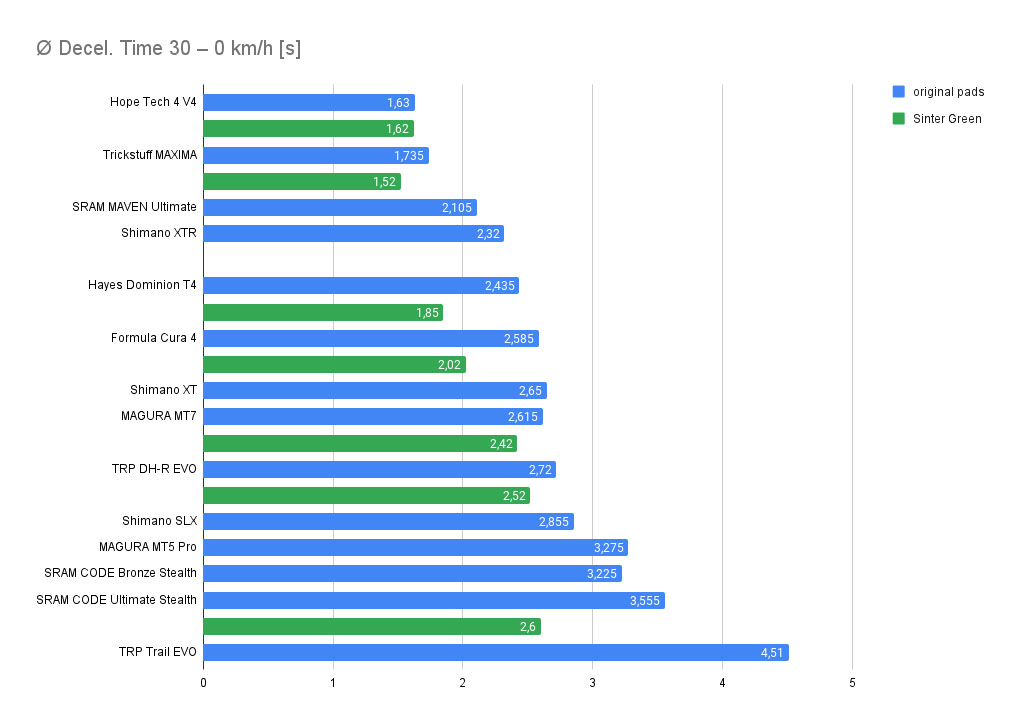
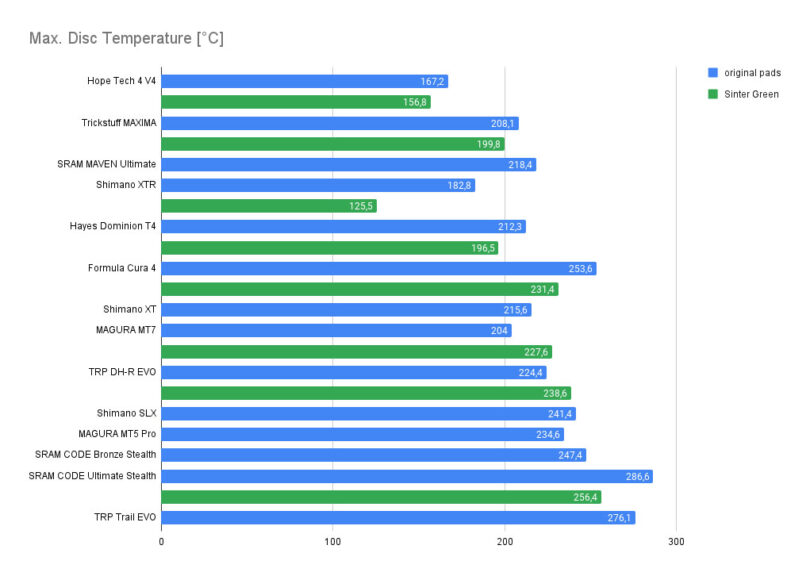
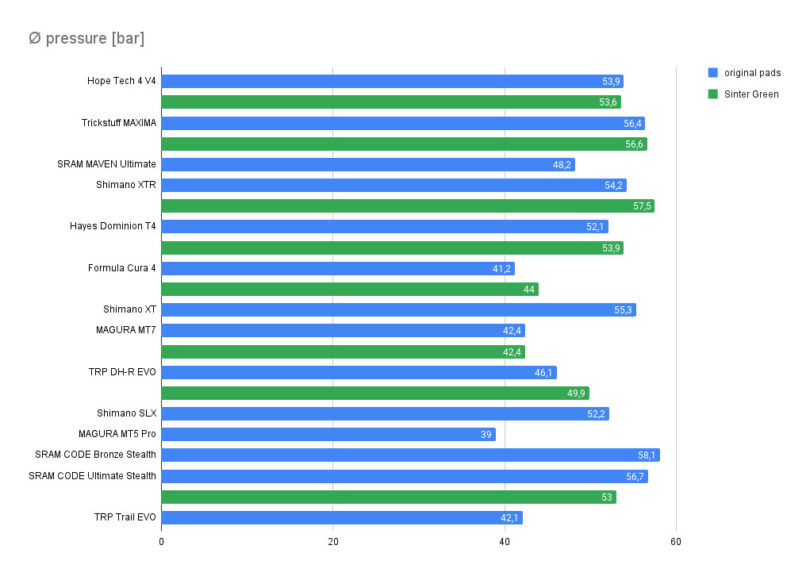
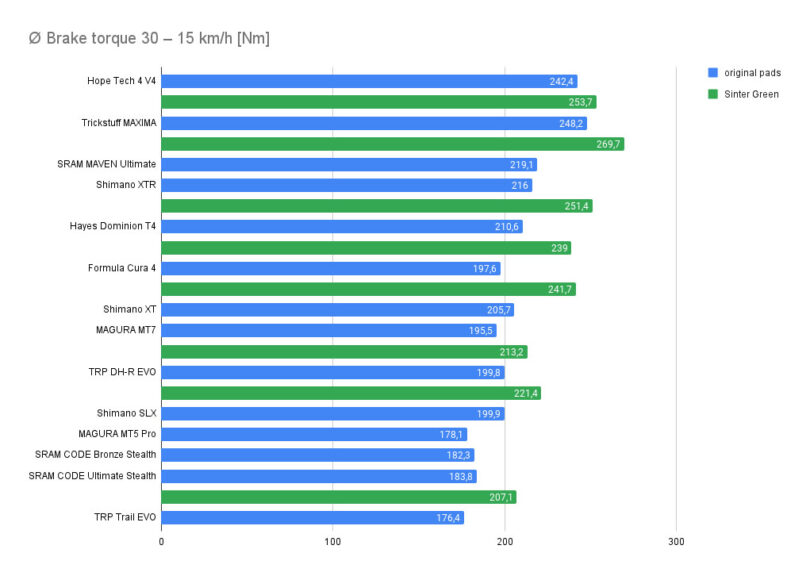

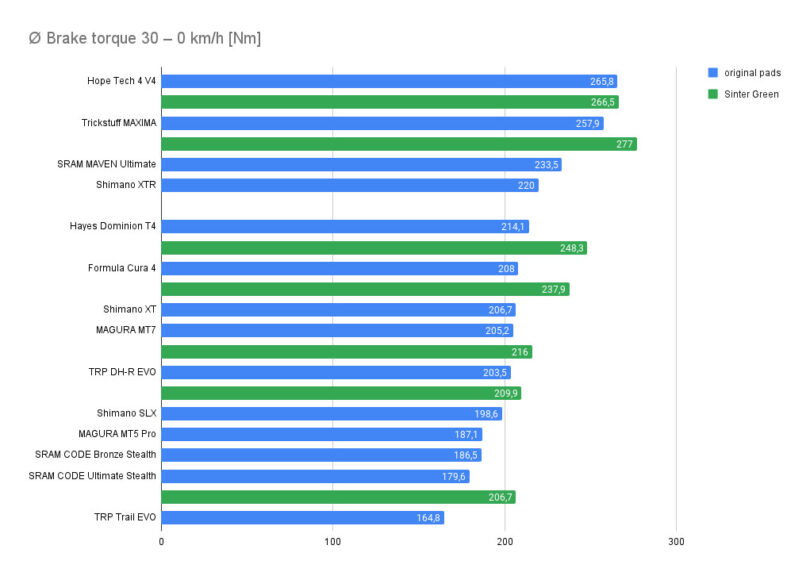
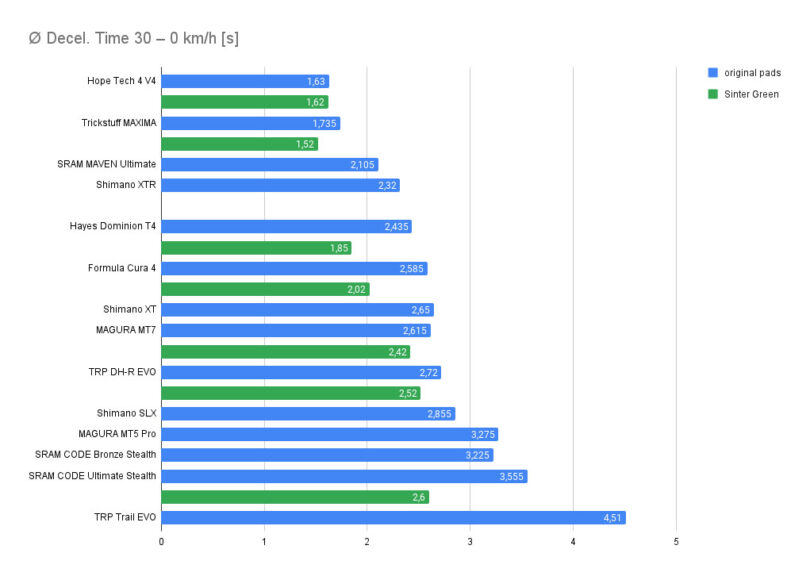





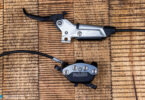
[…] FOX FLOAT 36 Performance Elite 160 mm Rear shock: FOX FLOAT X2 Performance 160 mm Brakes: Shimano XT Drivetrain: Shimano XT 1×11 Seat post: GIANT Contact SL Switch-Remote Stem: Truvativ […]
[…] Although the standard alloy Renthals easily do the job, our tester preferred the feel of the carbon versions, but had no complaints about the SRAM Guide RS brakes. […]
[…] RockShox Pike Solo Air RC 130 mm Brakes: Shimano XT M8000 Drivetrain: Shimano XT M8000 Seatpost: KS LEV Integra, 150 mm travel Stem: Burgtec Enduro mk2 35 mm […]
[…] RockShox Pike RCT3 140 mm Rear shock: RockShox Monarch RT 140 mm Brakes: SRAM Guide Ultimate Drivetrain: SRAM X01 Eagle Seatpost: RockShox Reverb Stealth Stem: Concept 60 mm Bars: Concept Flat […]
[…] FOX 36 Factory 150 mm Rear shock: FOX FLOAT Factory DPS Evol 135 mm Brakes: Shimano XT Drivetrain: Shimano XT/XTR Seat post: FOX Transfer 125 mm Stem: Phoenix Trail Enduro Handlebar: […]
[…] RockShox Pike RC 160 mm Rear shock: RockShox Monarch RT 3 160 mm Brakes: Shimano XT Drivetrain: Shimano XT Seatpost: KS Lev Integra Stem: Oval Concepts 60 mm Bars: Oval Concepts 760 […]